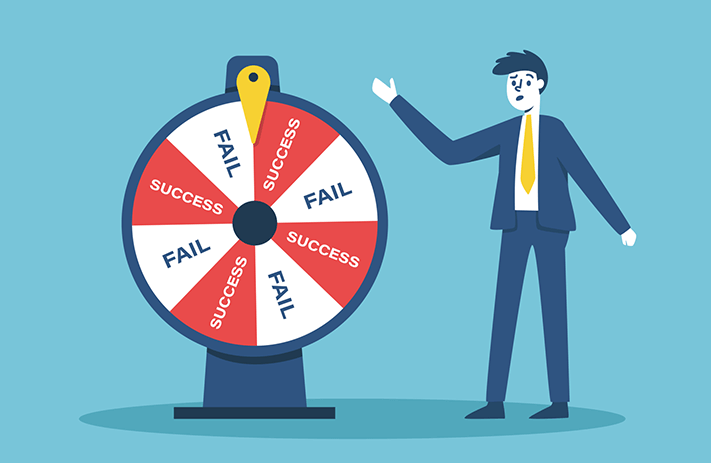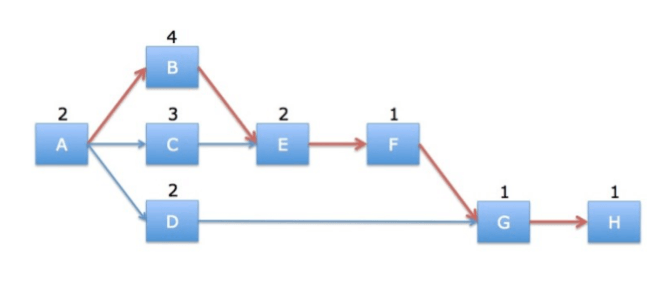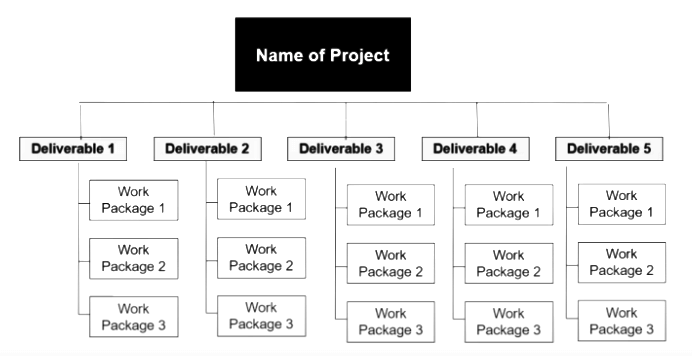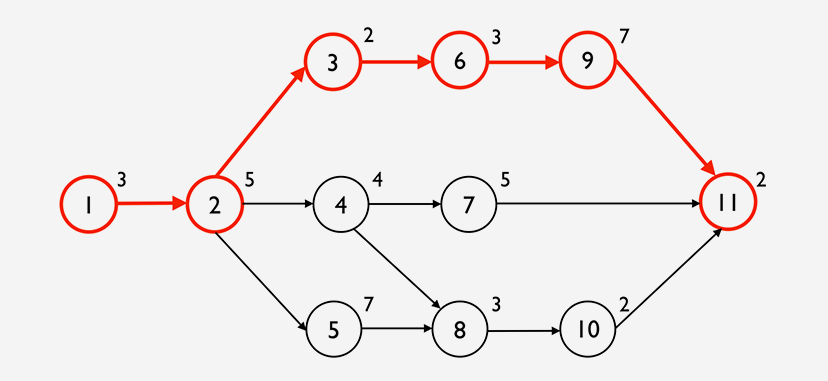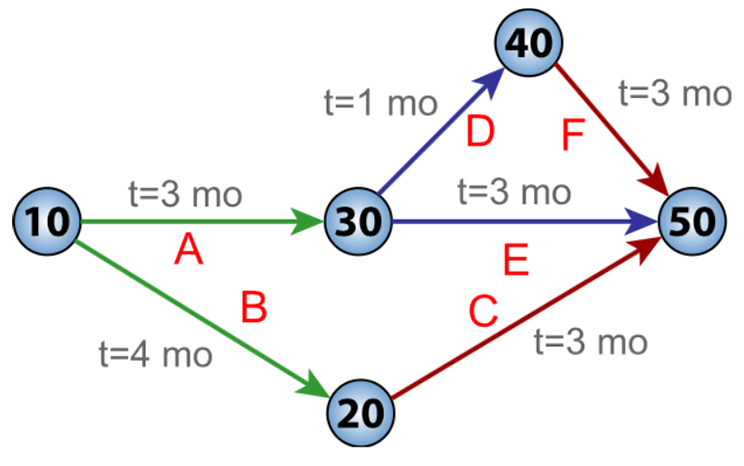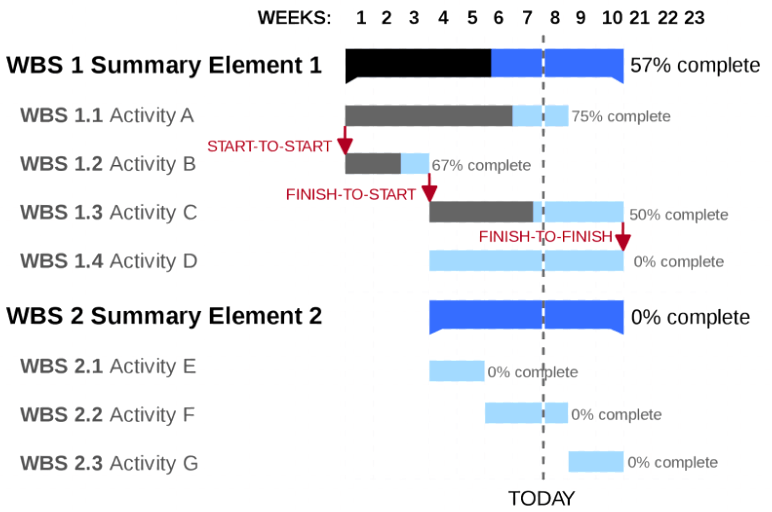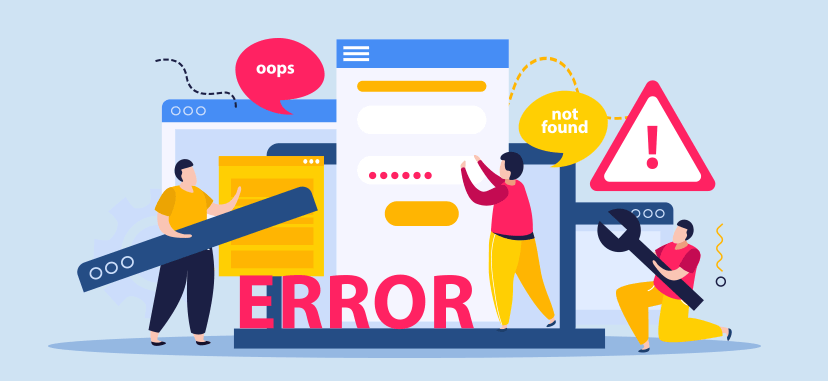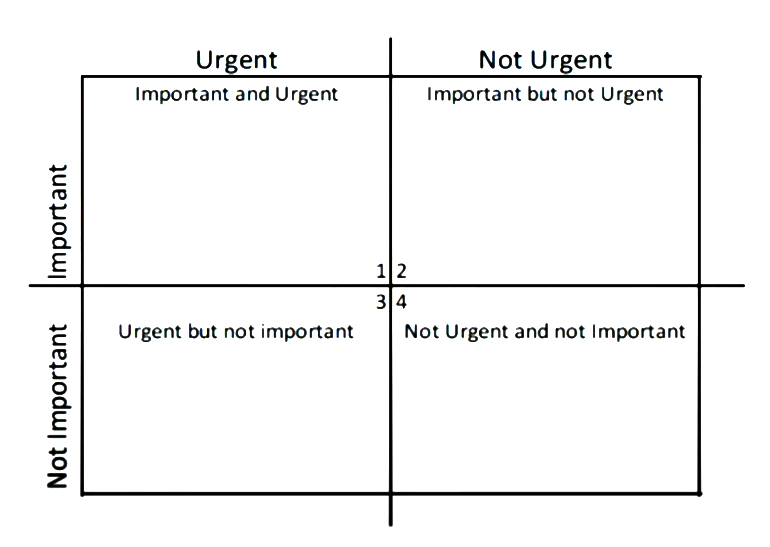It’s not uncommon for a project sponsor to hand over the reins to a project manager and become occupied in other matters, then only chime in at the end when presented with a bill.
Yet, it’s nearly impossible for a project manager to deliver value when crucial people like the stakeholders and sponsors aren’t interested in giving feedback on a project.
Weak communication and supervision, overlooked risks and a failure to perform a risk benefit analysis are some central reasons projects fail to deliver their intended value.
Establishing project governance makes all these problems go away. A governance provides the structure and framework necessary to steer a project in a direction that generates business value and serves the bottom line. It provides a system of checks and balances that properly monitors a project through execution all the way to completion.
If you’re interested in staging a project for success, then project governance is your solution. Let’s look at the meaning and definition of project governance, and some examples and best practices for using it within your projects.

Project Governance Defined
Project governance provides an overall framework for a project. It’s a central component of end-to-end project management, and is utilized during the initiation, planning and execution stages of a project.
The PM Glossary defines project governance as: “The structure by which roles and relationships between project team members and an organization’s high-level decision makers are defined.”
Project governance, essentially, oversees a project and advocates for the project’s business strategy. The governance board represents many facets of a project in order to ensure that a project doesn’t wander off, but rather progresses in a direction that aligns with the company’s vision and business objectives.
A project governance is established during the initiation stage. Its components oftentimes are determined by previously established systems, or through correspondence between the project sponsor and the project manager. The project governance has a clear understanding of the business justifications for a project. It promotes this business strategy through three central functions.
1. Sets strategic direction for a project.
The project governance establishes a project’s strategy and focus during the planning stage, and monitors it during the project’s execution.
2. Makes decisions during the project.
The governance evaluates a project as it progresses. Team members report and escalate issues to the project governance, who then determine necessary changes to the scope, the deliverables or the overall outcome.
3. Oversees project execution.
Finally, a governance monitors a project at various stages during the execution, to ensure it reaches certain milestones and produces deliverables according to plan.
In summary, governance is like a board of advisers. It’s deliberate, organized oversight, and creates a structure that enables a project’s success.

Example of a Project Governance Framework
A project governance doesn’t have a fixed or definite structure. The right governance varies depending on the project. A governance with too much control stifles productivity and innovation, while a governance with too little supervision leads to an unfocused and mediocre deliverable. Generally, however, every project governance consists of three central components, with distinct roles and responsibilities for each.
1. A Project Sponsor
A project sponsor is the person who has invested in the project. As all the key decisions rest on his or her shoulders, the project manager works closely with the sponsor and meets regularly for consultation and guidance. In a small project, the governance may only consist of the sponsor who meets with the project manager once a month.
2. A Steering Group
The steering group, or project board, is a group of stakeholders who oversee and monitor a project. They work with and under the sponsor to closely monitor risks and provide expert feedback.
Generally, a steering group is composed of subject matter experts who understand the best practices for a project. They initiate a project, plan it, approve the scope document and monitor a project throughout. The steering group is consulted regarding any changes to a project’s scope, timeline or budget.
Although a project’s governance varies depending on the nature and size of a project, the steering group generally consists of fewer than ten members.
3. Project Manager
The project manager doesn’t contribute so much to the vision of the project as he or she facilitates the objectives of the sponsor and the steering group. A project manager closely monitors a project during its execution, looking closely at expenses versus value, facilitates all communication between stakeholders and oversees changes and course corrections.
These three components make up a governance board for most projects. Some criteria for determining who to include within the governance include the project’s risks, the timeline and the scope.
With respect to agile projects, governance presents a bit of a conundrum. Agile projects tend toward autonomous teams who have strong project ownership. This doesn’t translate into no framework structure, however. Agile projects still retain project governance, but the framework becomes more malleable as the agile team matures.

7 Steps to Set up a Project Governance
The purpose of project governance is to maintain transparency and accountability, and make sure the project is aligned with the business strategy. These seven steps ensure that a project governance is properly established to achieve these ends.
1. Identify Sponsor and Stakeholders
This first step may sound like a no-brainer, but it can be challenging sometimes to identify the sponsor and all the stakeholders.
A sponsor, generally, is the person who’s initiated and invested in the project and who wants to see it to completion. The sponsor is the main customer, a key decision maker and the number one person for the project manager to communicate with during a project. Although it seems straightforward, it’s not always totally clear who’s sponsoring a project. It’s necessary to clarify this however, as identifying the sponsor provides the project with a focal point for decision making.
A stakeholder is anyone who’s impacted by the project and its outcome. This includes a variety of people, including business owners, sponsors, government regulators and suppliers. It takes some brainstorming to identify all the project’s stakeholders. As this is another group who contributes to the project plan and execution, the stakeholders need to be clarified at the get-go.
2. Establish a Steering Committee
A steering committee, sometimes referred to as a project board, is a group of people who represent the project stakeholders. Generally it’s composed of around five senior individuals in the organization, including the project’s sponsor, the customer, a supply representative and other users impacted by the project.
The purpose of the steering committee is to provide insight, make decisions and support the project to make sure it proceeds smoothly.
The project manager isn’t part of this board, but he supervises it and disseminates information to the group. For example, the project manager may provide project updates with a slide deck at monthly meetings with the steering committee.
3. Create Documentation
The planning stage is probably the most critical to determining a project’s success. If completed thoroughly, it lays a strong foundation and forces the steering committee to think everything through and identify possible risks and issues. Here are some fundamental components of a healthy planning stage:
- A written document that lays out the sponsor and the members of the board.
- A project proposal or plan document that identifies the “what” of the project and the “why.” The “what” of a project is also known as the project’s definition.
- A project’s “why” is its business case, which explains the business justification for the project. Generally, the business rationale for projects are things like improving operational efficiencies, developing a new product or adhering to compliance regulations.
- The project plan. This is the “how” of the project, and it spells out things like materials, scope, budget and timeline.
- The “what if” of the project. This is the project’s risk management plan, and it carefully considers threats to any of the project’s assets, and puts plans in place to mitigate, avoid or transfer the threats.
- A project handover and completion plan. These explain how to resume the project in the instance of a handover, and the criteria for completing the project.
4. Initiate a Boundary-Gate Process
This system evaluates a project at several stages. At the beginning of a project, the project manager divides the life cycle of the project into stages, with go or no-go demarcations at each. When the project reaches a boundary-gate, the steering committee evaluates whether or not it has reached the predetermined milestone, and gives it either a green light, meaning it continues, or a red light, meaning the project ceases.
A boundary-gate (or stage-gate) process allows a project to stay on track and deliver value. This system ensures the proper channels are consulted at each stage, and that the project follows its strategic course.
5. Engage the Steering Group
Chances are, the steering group is preoccupied with many other projects and responsibilities. The duty lies on the project manager to encourage their involvement in and contribution to the project at hand. One way to engage the group is with routine weekly status update meetings that clearly communicate the stakes and the benefits of the project and allow the committee to provide feedback.
6. Engage the Sponsor
More often than not, a sponsor is perfectly happy to hand over the responsibility for the project to the project manager and then forget all about it. However, the project reflects the sponsor’s vision, and the project manager simply facilitates this vision. And so it’s imperative that the sponsor keep a keen eye on the project throughout its execution, in order to be sure it’s on track. For those times when a project manager encounters a passive or uninterested sponsor, here are some engagement strategies:
- Communicate the benefits of a successful project.
- Give her a sense of pride in the project.
- Show how the project might enhance his professional reputation.
- Identify the risks of not overseeing the project.
7. Allocate Time and Resource to Governance
And finally, appreciate that good governance takes time. Continual, ongoing communication and transparency are fundamental to healthy governance. Meetings can’t be squeezed into a fifteen minute window at the end of a busy day, or continually cancelled and rescheduled. Rather, utilize a proficient project management tool to ensure everyone communicates regularly. Set up processes and procedures for good record keeping.
These eight steps foster a robust governing board which provides a project with a strong and steady framework.

7 Benefits of Project Governance
The governance board melds many perspectives and establishes a vision for a project. Let’s take a look at the many ways a project benefits from this structure.
1. Aligns a Project With Business Goals
It’s so easy to focus on time consuming things that don’t really align with a company’s culture, mission, or business objectives. This mindless meandering creates stagnation and precludes growth.
A project governance, on the other hand, aligns a project around business objectives. It continually monitors and course-corrects a project, to keep it sailing toward its North Star.
2. Sets Direction and Strategy
It’s no accident that a governance board is also called a steering committee. Just as a steering wheel allows a car to veer away from a ditch, a governance board keeps a project from going off the rails.
The governing board combines its business acumen and expertise to steer the project in a direction that best utilizes the project’s resources.
3. Disseminates Information
So often, a SNAFU occurs simply because the right people didn’t receive the right information at the right time. A governing board establishes a system of continual communication, and procedures to escalate concerns to the right places. With a system of routinely sharing information, everyone keeps abreast of the project and issues are spotted right away.
4. Monitors and Realigns
A strong governing board monitors a project during the execution stage. For example, a furniture company that sets a goal to design a dining room table can easily get side-tracked by custom orders or demanding customers. However, with stakeholders continually overseeing the project’s progress, it provides the supervision needed to keep the project on track.
5. Establishes Good Processes
A project without governance may not have a clear sense of priorities, and may fall into patterns of attending to the squeakiest wheel rather than focusing on the work items that add value. A governance makes sure the project does the right things in the right way. And the combined expertise allows for all of the risks to be properly evaluated.
6. Conserves Resources
Have you ever seen a “ghost highway”? The project was suddenly abandoned during construction, and the highway heads into nowhere. Clearly, in these instances a project board realized mid-project that something wasn’t right and wasn’t afraid to call it quits.
Similarly, a governance board isn’t scared to jettison a bad project. Once it appreciates that the project doesn’t make business sense or the risks are too high, it can nip a project in the bud. This preserves valuable resources and allows an organization to dedicate itself to projects that do add value.
7. Keeps a Project Within Its Scope
Governance has a proven track record. When it’s properly established and engaged, a steering group monitors a project to keep the timeline on track, and spots scope creep before it starts.
As you can see, project governance is well worth the effort. But establishing one isn’t a piece of cake.

3 Common Challenges to Project Governance
Project governances don’t just happen. At the same time that they provide a project with many benefits, it’s no cinch setting one up. Here are three common challenges to project governance, along with some tips to overcome them.
1. Identifying All the Stakeholders
Stakeholders don’t raise their hands to identify themselves during a project’s initiation stage. Although some are front and center, others lurk in remote places the project manager may not even think to look. Suppliers, for example, are crucial stakeholders that are easy to ignore completely. But forgetting to consider them could mean not receiving the necessary materials at the right time or at the right price.
It takes some brainstorming, delving, and talking to the right subject matter experts to thoroughly identify all the stakeholders. Creating a network diagram also helps to think things through and identify everyone who’s impacted by the project.
2. Selecting the Right Framework
Governance is not one-size-fits all. An overbearing governance can squelch a team’s initiative, while a weak one allows it to go off the rails. On small projects, just the sponsor is sufficient for a governing board, while larger projects may require a board of a dozen people. It takes some teasing to identify the proper governance for a particular project. It means including all the right people to provide the necessary expertise, without letting it become too large or authoritative.
Ultimately, the steering committee determines so much about a project, from the kickoff meeting to the communication tools and the processes used throughout. A project manager determines his or her optimal governance by identifying the stakeholders and clarifying what success looks like. It may take experience to establish the right meld.
3. Ongoing, Daily Communication
Much of the communication necessary for executing a project won’t occur without deliberate planning. In a remote team, a steering committee can easily go for days without contacting one another. And even in a busy office, people are concerned with many other things.
A project manager selects effective tools and a workable schedule to facilitate fluid, ongoing communication. This may include a daily scrum, weekly round-ups or steering group meetings at project boundary-gates.
As you can see, establishing a project governance isn’t so simple as deciding to have one. An effective governance requires some sweat and tears. When aware of the challenges, however, it’s easy to overcome them.

Project Governance Best Practices
As discussed, governance doesn’t just happen. Rather, it’s formed and developed. Let’s look into the characteristics of a robust governance system.
1. Gate Reviews
A project doesn’t receive a green light at initiation and then proceed like a line of collapsing dominos. Healthy governance, rather, divides a project into stages, defining processes and milestones to reach at each. At each gate review, a steering committee evaluates the project according to predetermined criteria, and assesses if it’s achieved certain milestones. The business case is updated periodically to assist with the reviews. If the milestones aren’t met or if the project reveals a weak ROI, then the project ends.
2. Audit Trail
Alongside each gate review, a system for documenting the steering committee’s decisions allows everyone to understand what decisions were made, and why.
This audit trail shifts the responsibility away from the sponsor and project manager and distributes it amongst the steering committee as well. It creates an environment where everyone is accountable and responsible for the success and direction of a project.
3. Define Governance Roles
Oftentimes things fall through the cracks just because people don’t understand what they’re responsible for. Identifying the stakeholders, the sponsor and each of their respective responsibilities keeps all of the critical aspects of a project under a watchful eye. It also allows teams to understand who to escalate issues to.
4. Project Aligns with Culture, Mission, and Organization Strategy
When both the project manager and the sponsor have a thorough understanding of the organization, it’s possible to plan and steer a project to align with its mission, culture and overall business goals.
5. External Audits
In the enthusiasm of completing a project, it’s common to turn a blind eye to things like compliance and regulations. Allowing external experts to come in and oversee processes keeps everything in compliance and precludes expensive headaches and rework.
6. Transparent Culture
A culture that thrives on secrecy and power struggles, where everyone shirks responsibility and blames others, is fertile ground for stalled and failed projects.
In a transparent culture, on the other hand, responsibilities and roles are clearly understood. It’s clear where to escalate an issue, and concerns are listened to and addressed.
Open cultures start from the top. Leadership rewards the behavior they want to see, listens to concerns and admits to failures and shortcomings.
7. Full Disclosure When Planning
In the enthusiasm for developing a new product or improving procedures, it’s easy to look at a project through rose colored glasses. A grocery store that wants to automate its checkout process, for example, might rush to complete the project without carefully calculating how much time and resources the automation will save versus the costs for new equipment, maintenance and periodic updates.
Other times, stakeholders are interested in getting a project approved simply because it may lead to a promotion or a raise in pay.
Openly and honestly laying all the cards out on the table allows the steering committee to properly evaluate and make decisions. Rather than exaggerate benefits and gloss over costs, considering benefits and costs with pessimistic, likely, and optimistic values provides a full range from which to consider a project.
8. Appropriate Stakeholder Involvement
Not every stakeholder carries equal weight in a project. A supplier who provides a small portion of material, for example, has far less influence than the business owner or the product manager.
A healthy governance delineates these various levels of influence, and involves the stakeholders accordingly. A senior stakeholder, for example, may be regularly contacted by a senior member of the steering committee. Whereas a lower stakeholder with less interest isn’t included in all communications.
9. Competent Resources
Procurement and resource management are central components to a governance. A steering committee carefully looks at all of the materials, labor, equipment and facilities required to carry out a project, and develops plans to acquire the most suitable resources within the given timeline and cost.
These best practices allow a project manager to overcome the challenges of setting up a governance and to establish an effective governance to oversee a project.

Conclusion
As project managers know, you don’t have to take your eye off the ball for long before you’re whiffing at strikes. It’s so easy for scope to increase without adherence to proper change management processes, for resources to be squandered, and for a project to add no business value to the organization whatsoever.
Good governance sets a project up for success from the start. It eliminates a need to play catch up or rescue a flailing project. Rather, it oversees and monitors a project from initiation to closure.
A suitable governance framework depends on the project. Some may be as simple as a sponsor and a project manager, while others consist of a steering board that includes several stakeholders.
It takes diligence to set up a strong governance. But the effort is worth it. If you’re looking to boost your performance as a project manager, then project governance may very well do the trick.

